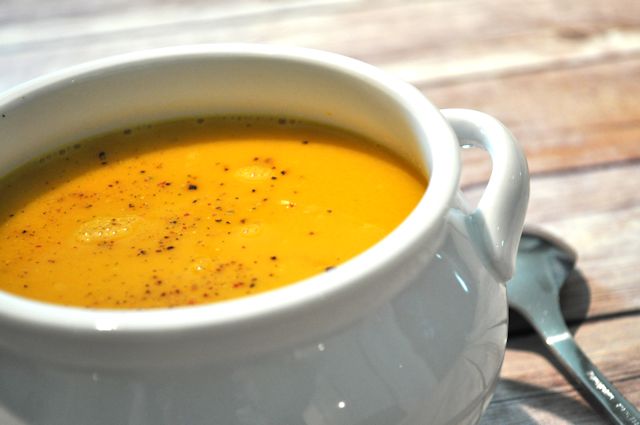What are my top tips for using a soup maker? Read on to find out.
For me, a soup maker was a welcome present from Morphy Richards, which has seen a labour of love grow from early beginnings.
Morphy Richards now have a new machine on the go, which seems to have a sauté base, so I covet that version at the moment. For now, I will stick with my kettle version of a soup maker.
I imagine that if you are looking for soup maker recipes, that you already own a machine, but if you don’t, there are major differences between the two styles that prevail.
Types of Soup Maker
Kettle / Jug Type
This is like the version that I have. It resembles a large kettle, but you cannot see the inside of it while the soup cooks. You do need to use the minimum and maximum settings on the kettle to make sure you have the right amount of ingredients and fluid in your soup maker. My version can also make smoothies, which is a very welcome thing indeed. The blender attachment is in the top of the kettle, which makes for very easy cleaning.
Blender Type
These versions tend to be slightly more expensive. They can often sauté onions and vegetables, but with the kettle versions catching up, that benefit will soon be wiped out.
These usually resemble a traditional counter top blender, with the blending tool in the bottom of the glass. They are said to be more difficult to clean, but I cannot vouch for that. You really would have to find out for yourself.
Considerations For Buying A Soup Maker
Decide what SIZE of soup maker you will need. My version makes soup from 1.3 – 1.6 litres. If you are only making soup for one person, you might be fine with a small quantity soup maker, or simply freeze what you have made for another day.
Different SETTINGS do made a difference. I wanted the option to have both smooth and chunky soup from my soup maker. The smoothie function was an added bonus. It isn’t obvious when you look at some versions, but reading more deeply into functions and settings, you might find the one you are coveting cannot do one or the other.
If you want ease of CLEANING, then you have no option but to read through the reviews of people who have owned soup makers. I have only suffered from one burnt bottom of the pan, and that was my own fault, as I forgot to stir the ingredients with the fluid before I popped on the lid. It is worth nothing though, that even though the bottom did burn, just a little….a ten minute soak with hot soapy water, and it scrubbed off no problem.
Soup Maker Tips and Tricks
- Prepare as much of your ingredients as possible in advance. Considering that most of my recipes are simply chop and plop, it’s quite easy to do.
- Use boiling water for your stock, or liquid addition. I find that if I use it cold from the tap that the vegetables may not be fully cooked when the soup is ready. Starting with hot stock, gives it a great chance to add more flavour and taste.
- If you plan to use anything frozen, make sure the ingredients are fully thawed first.
- Make sure all meat that goes into the soup maker is pre-cooked. Soup makers do not have long enough settings to cook your meat.
- Chop your ingredients into small pieces, especially potatoes, carrots and turnip. This allows the vegetables to fully cook in the short soup maker cycle.
- Ensure the lid is fully closed or sealed.
- Do NOT open the lid during cooking. If you do you may find yourself splattered with very hot liquid.
- Some soup makers have a strong pulse setting. I’ve seen many people recommend holding down the lid, to avoid soup being pushed up and out of the blender. I do not have this problem with my version, but remember to check out the possibilities of your own.
- Follow your manufacturers minimum and maximum guidelines. My jug has these clearly marked on the inside of my machine.
- Do not submerge your soup maker fully in water to clean. Follow your instructions to the letter, or you may short out your machine.
- Follow your manufacturers instructions for cooking, cleaning and maintenance.
SAFETY WHEN USING A SOUP MAKER
- NEVER fill your soup maker past its manufacturers recommendation or outside the minimum and maximum fill levels.
- Do NOT immerse any parts of your soup maker fully in water.
- Keep soup makers and kettles away from the edges of counters, especially if you have children, to avoid them being dragged over the edge.
- Do not be tempted to open the lid during cooking. The soup maker contents may explode over you.
